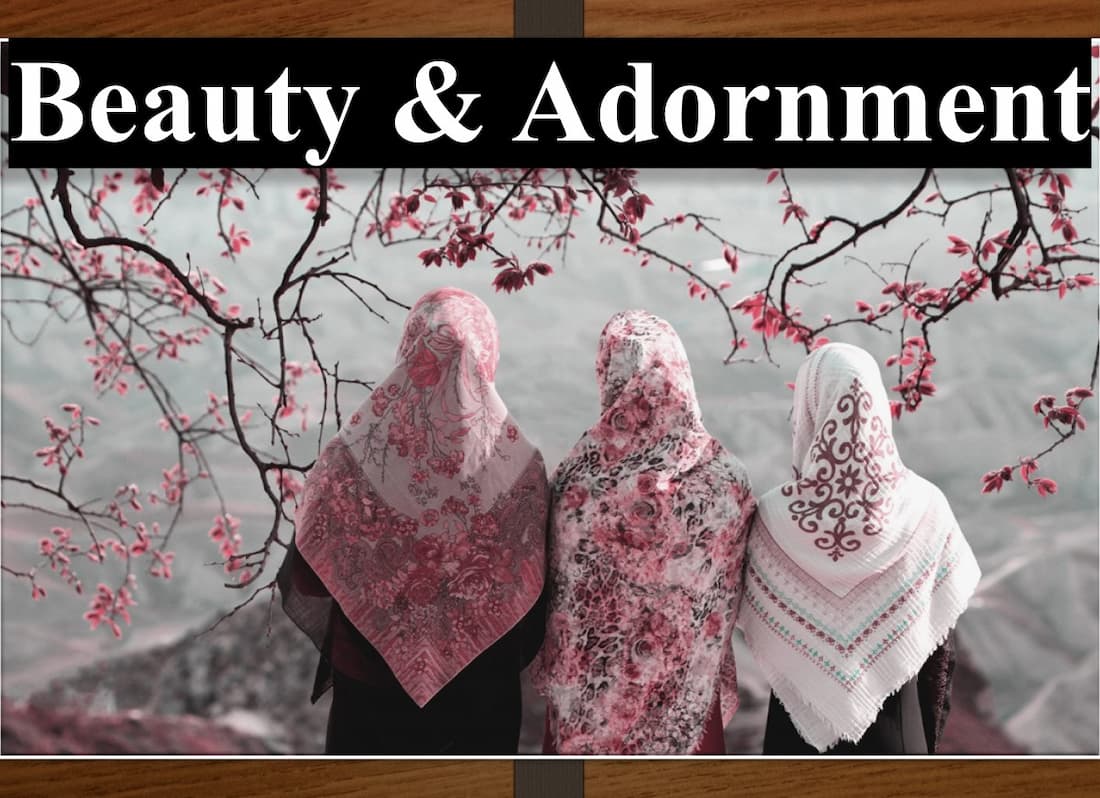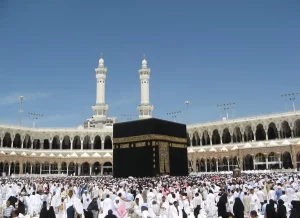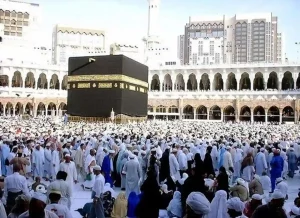THE COMMANDMENT FOR PROTECTING THE GAZE AND HIDING THE ADORNMENT
Beauty and Adornment in Islam Tafseer PDF- Not only did Islam order women to stay home, to avoid talking flirtatiously to non-maúram men, and to cover themselves with cloaks, it also closed all the doors from where the carnal desires incite humans towards evil. Thus, Allah u says:
Tell the believing men that they must lower their gazes and guard their private parts; it is more decent for them. Surely Allah u is All-Aware of what they do. And tell the believing women that they must lower their gazes and guard their private parts, and must not expose their adornment, except that which appears thereof, and must wrap their bosoms with their shawls, and must not expose their adornment, except to their husbands or their fathers or the fathers of their husbands, or to their sons or the sons of their husbands, or to their brothers or the sons of their brothers or the sons of their sisters, or to their women, or to those owned by their right hands, or male attendants having no [sexual] urge, or to the children who are not yet conscious of the shames of women. And let them not stamp their feet in a way that the adornment they conceal is known. And repent to Allah u O Believers, all of you, so that you may achieve success. (24:30-31)
Adornment in Islam-Before covering the details of the injunctions in the above two ayas, it will be useful to know that the first aya is the same aya raised in the beginning of this chapter [33:53] which was revealed at the time of the marriage of Zainab bint Jaúüh to the Blessed Prophet s. Scholars believe that this aya was revealed in the 3rd or 5th year of Hijra.
Imam Ibn Kathīr and ‘Allóma Shaukónī are of the opinion that it was the 5th year of Hijra. In Rñú al-Ma‘ónī, ‘Allóma ôlñsī narrates from Anas g that the marriage took place in the month of Dhu al-Qa‘da in the 5th year of Hijra, and the scholars are unanimous that the first aya of hijab was revealed on this occasion.
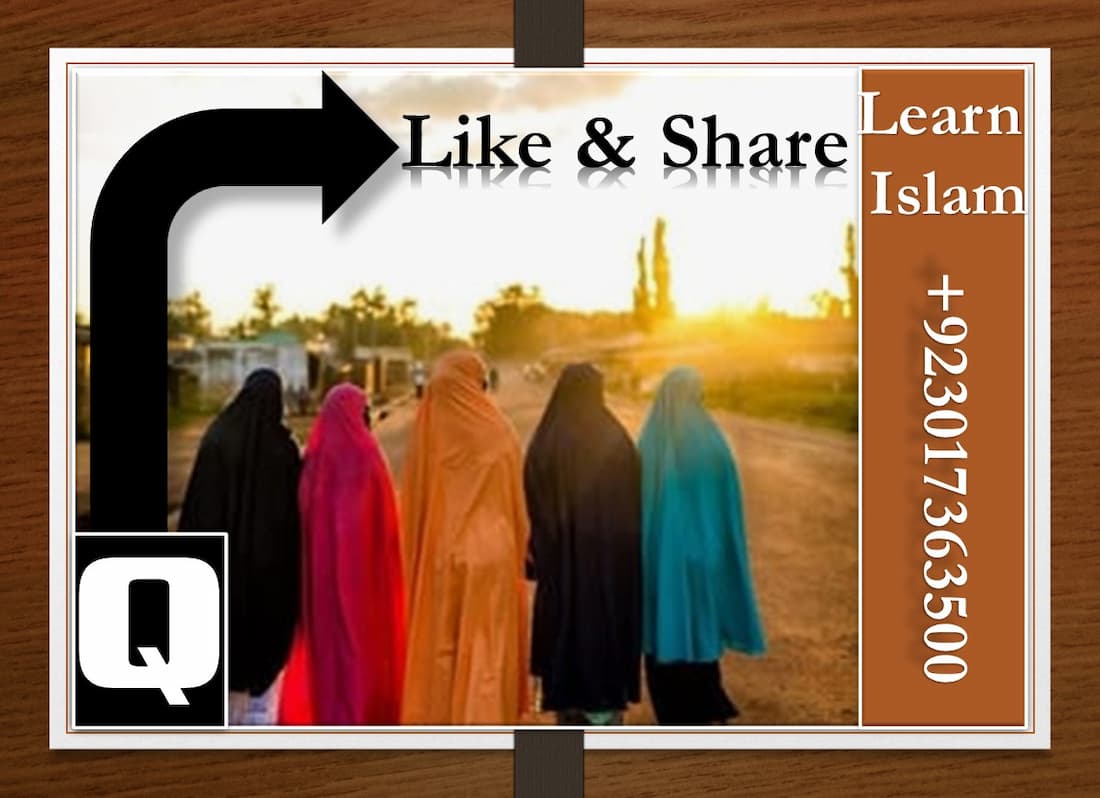
The above two ayas of Sñrat al-Nñr (Adornment )were revealed at the time of the incident of Ifk which occurred after the Blessed Prophet s returned from the battle of Banī al-Muüøalaq. The fact that this battle took place in the 6th year of Hijra indicates to us that the above two ayas (Adornment ) were revealed after the ayas of Sñrat al-Aúzób. Thus, the first commandments on hijab came and were implemented upon revelation of the ayas from Sñrat al-Aúzób. The above ayas [from Sñrat al-Nñr] further contain the following commandments:
lowering the eyes [Ghaðð al-Baür]
The word yaghuððñ (lowering) in the above ayas derives from the root word ghaðð which means to lower, to regulate, to suppress. (Mufradót al-Qur’an)To lower the eyes in this context means to turn away the eyes from everything that is forbidden (Tafsīr Ibn Kathīr) .
This includes gazing at a woman with bad intentions [which is úaróm], gazing at a woman without any intention at all [which is makrñh], and also looking at the satr of any man or woman. However, necessities such as medical treatment are exempt from this ruling. Similarly, looking into people’s homes and to gaze at all things forbidden in the Dīn also fall under this injunction.
Guarding the Modesty [Private Parts]
Guarding the modesty implies avoiding all the forbidden means by which sexual desires are fulfilled. This includes: adultery, rape, masturbation, homosexuality, lesbianism, etc.
With a little thought [to the meaning of this aya-Adornment ], it becomes abundantly clear that the focus of these ayas is to stop men women from all the forbidden means of satisfying sexual desires.
The first and last injunction as pointed out above [i.e., looking at others with bad intentions and guarding the private parts], and everything in between these two injunctions are implicitly included in this commandment. It is true that the sexual desires and sexual misconduct begin with gazing at the opposite sex, which potentially leads to other more serious evils such as adultery and rape. In between these extremes are sexual fantasies, lewd talk, touching, fondling, etc. Imam Ibn Kathīr quotes ‘Ubaida:
كل ما عصي الله به فهو كبيرة و قد ذكر الطرفين
Everything which is in disobedience of Allah u is a major sin. In this aya, both ends of this sin are mentioned. ( Tafsīr Ibn Kathīr) Concealing the Beauty and Jewelry . What does the word zīnat (beauty) mean? Shaikh Muúammad Idrīs Kóndhelwī writes:
Zīnat means beautification, whether it be natural such as the face, hands and body, or artificial such as clothes, jewelry and make-up. All of these form the outward beauty of a woman and are included in the meaning of illó mó þahara minhó [except that which appears thereof]. All of these things, therefore, should be concealed from everyone except the maúórim (Maúórim [is the plural of maúram]—men with whom marriage is impermissible, e.g. father, brother, uncle, etc.) [i.e. those who are exempted in the aforementioned aya] who are mentioned in the next aya. The injunctions in this aya are mainly related to women’s satr, i.e., an elucidation of what parts of a woman’s body and her beauty must be concealed from others. In the next aya, twelve types of relations of a woman are mentioned in front of whom she is not required to observe these restrictions.(Ma‘órif al-Qur’an)
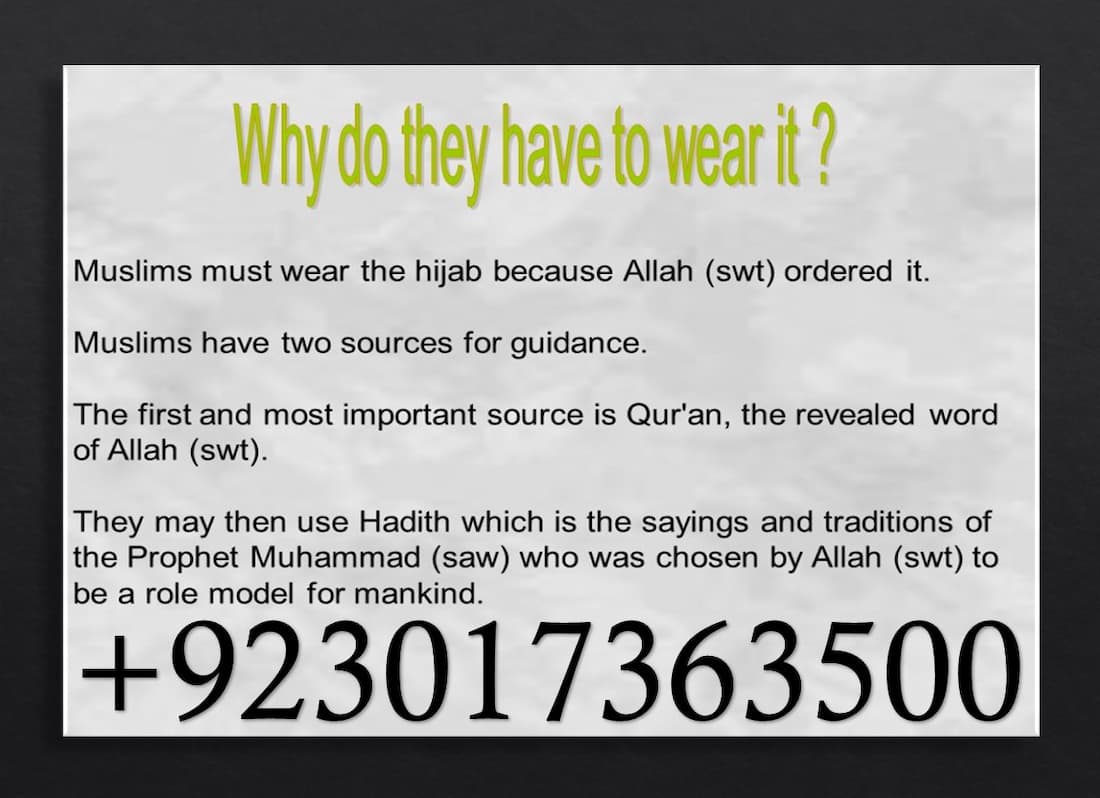
Mufti Muúammad Shafī‘ writes:
Adornment in Islam-In the beginning of this aya (Adornment ), women were asked not to reveal their beauty. In this part of the aya, they have been asked to conceal their natural beauty as well by covering it with their scarves. The purpose here was also to eradicate the custom prevalent in the days of Jóhiliyya whereby women wore the scarves on their heads with the sides hanging on the back.
This left their ears, neck, collar and chest exposed. Therefore, Muslim women were asked not to wear their scarves in this manner but to wrap the two sides of it closely on top of one another in the front so as to cover their chests and all the other parts of the body also. In the next part of the aya, the men with whom hijab is not required are mentioned. There are two reasons for the exception of these specific men.
First, there is no danger of any evil from these men as they are maúórim. By nature, they are the protectors of their women’s honor. Second, they live with these women in the same house which also dictates that they be exempted from these restrictions. It is also important to remember that with the exception of the husband, the satr must be observed with the rest of these maúórim men.
Exposing of satr, which is not permissible even in üalót, is forbidden with the maúórim also. Eight maúórim and four other types of men are exempted in this aya from the commandment of hijab. Seven of these maúórim were mentioned previously in the aya of hijab in Sñrat al-Aúzób. Five exceptions are added in this aya.
It should also be kept in mind that the word maúram is being used in a general sense which includes the husband. The definition of maúram by the scholars, which means “a man with whom marriage is forbidden,” is not meant here.
Husband: A wife is not required to observe hijab of any part of her body with her husband. However, to look at the private parts unnecessarily is undesirable. ‘ô’isha j narrated that neither she nor the Blessed Prophet s ever looked at each others’ private parts.
- Father: The grandfather and great-grandfather are also included in this category.
- Father-in-law: The grandfather-in-law and great grandfather-in-law are also included in this category.
- sons: The biological sons. stepsons
Biological brothers and stepbrothers: However, male cousins, who are all non-maúram, are not included in this category. sons of the biological brothers or stepbrothers sons of biological sisters and stepsisters: Female cousins are not included in this category. The aforementioned list are the eight kinds of maúórim.
Women: nisó’ihinna (their women) refers to the Muslim women with whom hijab is not required. However, the satr cannot be exposed in front of them except due to medical reasons.
In the above discussion, the stipulation of Muslim women clarifies that observing hijab from non-Muslim women is obligatory and that they fall under the same category as non-maúram men. In explanation of this hadith, Imam Ibn Kathīr narrates from Mujóhid that it is clear that it is not permissible for Muslim women to uncover their body in front of a non-Muslim woman (Adornment ). However, the jurists have a difference of opinion given that there are authentic aúódõth about non-Muslim women coming to the wives of the Blessed Prophet s.
Some jurists say that the ruling of non-Muslim women and non-maúram men is the same while others believe that it is the same for all women [Muslim or nonMuslim]; therefore, hijab does not have to be observed from nonMuslim women. Imam al-Rózī states:
The reality is that nisó’ihinna [their women] includes all women, both Muslim and non-Muslim. The narration from preceding scholars concerning hijab from non-Muslim women is based on it being a preferred practice.
In Rñú al-Ma‘ónī, the jurist of Baghdad ‘Allóma ôlñsī writes of the hadith [which differentiates between Muslim and non- Muslim women]: The above ruling is suitable for the people at this time since it has become nearly impossible for Muslim women to observe hijab from non-Muslim women.
Female attendants or servants: According to the majority of scholars, male servants are not included in this category. Hijab must be observed with male servants as with other non-maúram men. Sa‘īd ibn al-Musayyab writes: لا يغرنكم آية النور فإنه فى الإناث دون الذكور
Let not the aya of Sñrat al-Nñr deceive you; it is about females and not males [i.e. servants]. ‘Abd Allóh ibn Mas‘ñd g, ûasan al-Baürī and Ibn Sīrīn say that a male servant is prohibited from seeing the hair of his female master. ( Rñú al-Ma‘ónī) But the question remains that if au mó malakat aimónuhunna [those owned by their right hands] refers to female slaves only then why mention them again separately when they are already mentioned previously in nisó’ihinna [their women]?
Imam Abñ Bakr al-Jaüüóü responds that the apparent meaning of nisó’ihinna [their women] refers to Muslim women while the words au mó malakat aimónuhunna [those owned by their right hands] are explicitly added to include non-Muslim slave women.
Men who have no interest or desire for women: (or male attendants having no [sexual] urge). Ibn ‘Abbós g explains that this part of the aya refers to the men who due to their mental or physical condition, have no interest or desire left in the opposite sex. ( Tafsīr Ibn Kathīr)
Ibn Jarīr narrates the same explanation from Abñ ‘Abd Allóh, Ibn Jubair and Ibn Aøøia. They are the men who are not sexually attracted to women, do not care for their beauty or what is happening in their lives, and do not speak to others about them. On the other hand, it is necessary [wójib] to observe hijab in the presence of hermaphrodites because of their attraction for women.
‘ô’isha j narrates that a hermaphrodite visited the wives of the Blessed Prophets. Thinking he was in the category of male attendants having no (sexual) urges, they came in his presence. When the Blessed Prophet s saw and heard him, he forbid him from entering the home. (Rñú al-Ma‘ónī)This is why Ibn ûajr Makkī says in Sharú al-Minhój that:
Even if a man is impotent, eunuch or very old, they are not included in the abovementioned category and therefore it is necessary to observe hijab from all of them.
The words ghairi uli al-irbati [having so sexual urge] with al-tóbi’īn [male attendants] refers to deranged men and the hangers-on amongst them who entered homes to get something to eat; women do not have to observe hijab from them. The reason they are mentioned in the aya is because such people existed at that time who entered homes only to get something to eat. They are excused in the aya due to their mental condition and not because of their dependence on food.
Prepubescent children: awi al-øifl alladhīna [or to the children who are not yet aware of the shames of the women] refers to children who have not reached the age of puberty and neither have they developed any interest for women or to know about sexual matters. The boy who has such awareness and interest is approaching the age of puberty and it is thus necessary to observe hijab from him. ( Tafsīr Ibn Kathīr)
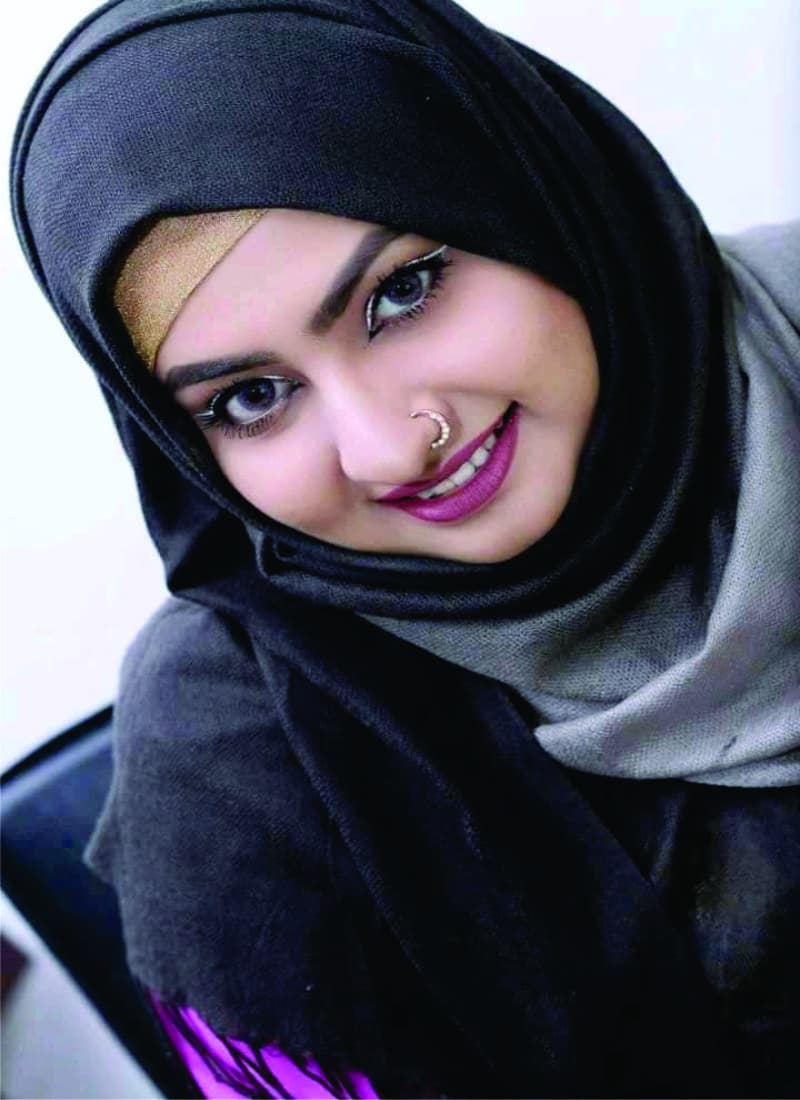
Imam Abñ Bakr al-Jaüüóü writes:
Here Adornment in Islam, øifl refers to those children who cannot differentiate the special relationship between men and women [related from Mujóhid].
Concealing the Voice
After lowering the gaze, guarding the modesty, concealing the beauty, and [the categories of] the maúórim, the fourth important issue raised in this aya is the voice of women. [In this part of the aya] women are asked not to walk with a heavy foot so as to draw attention of men through the sounds of their jewelry.
The first part of the aya forbade women from showing their beauty (Adornment ) to non-maúram men while the last part reaffirms this point since covering of the head and chest was mandatory for [women from before], and now [in this part of the aya] women are instructed to guard themselves against all the different ways in which her hidden beauty can be exposed. According to this aya, any such jingles hanging from the jewelry, or to wear jewelry one on top of the other so as to produce a jingle, or to walk in a way so as to cause clinking of the jewelry, which may be heard by non-maúram, men are all forbidden.
From this aya, many jurists have inferred that if it is forbidden for a woman to let non-maúram men hear the sound made by pieces of the jewelry [she is wearing], then it is certainly forbidden for non-maúram men to hear the woman’s voice. This is why they included the voice of a woman in the definition of satr. It is written in Nawózil:
Women should try their best to study the Quran from other women; learning from men is allowed only under extreme circumstances.
According to a hadith in Muslim and Bukhórõ, when a person is about to pass in front of someone who is offering üalót, a man can raise his voice and say subúón Allóh if a person is about to pass in front of him while he is in üalót. On the other hand, a woman cannot raise her voice and can only hit the palm of one hand on the backside of the other.
Now, whether the voice of a woman in itself is a part of her satr is disagreed upon. Imam Shófi‘ī does not include it in the definition of satr for women (Adornment ). There is a difference of opinion among the students of Imam Abñ ûanīfa. Ibn Hummóm includes it in the satr for which reason the ûanafīs say that it is not preferable for a woman to call adhón.
However, it is evident from the aúódõth that the wives of the Blessed Prophet s spoke with the non-maúram men from behind a curtain even after the revelation of the aya of hijab. Conclusively, [it may be said] that wherever the voice has the potential to create fitna for both men and women, it is forbidden and where there is no such likelihood, it is permissible to speak with a non-maúram man. For the sake of precaution though, it is preferable that women not speak to non-maúram men unnecessarily.
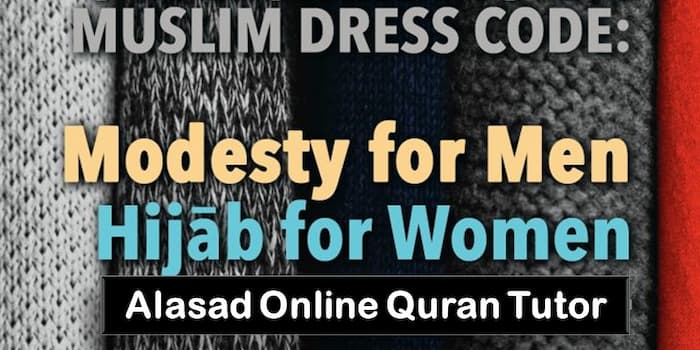
Imam Abñ Bakr al-Jaüüóü writes:
When Allah has included the sounds of jewelry worn by a woman as an expression of her beauty, it would also be forbidden for a woman to wear colorful and decorated outer garments [like a jilbób or ‘abóya] when she is amongst non-maúram men.
… (And repent to Allah u O Believers, all of you, so that you may achieve success.) ( 24:31)
After Allah u orders men and then women to lower their gaze and orders women to observe hijab from non-maúram men, Allah u informs both men and women that the matter of carnal desires is dangerous. Others may not know what transpires within a person but Allah u knows both the hidden and the apparent; therefore, if anyone has transgressed from the above injunctions, he should repent and make firm resolution to never disobey Allah u again. ( Ma‘órif al-Qur’an)

